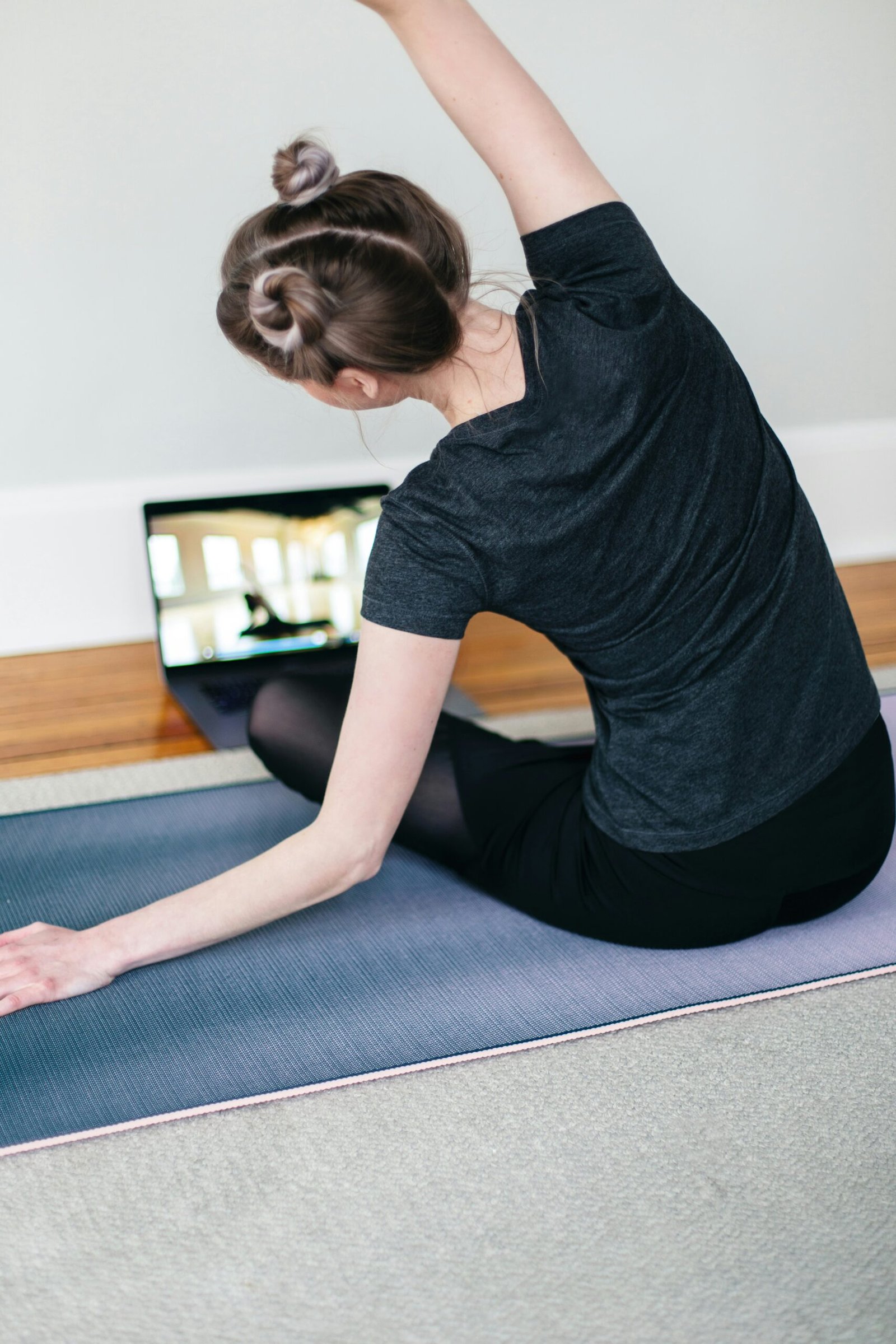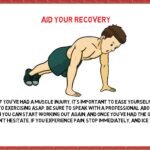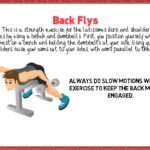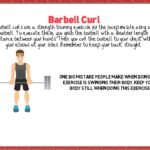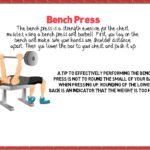poppanew
Home Fitness Unleashed: Unlock Your Strength with These Must-Try Exercises!
Introduction to Home Fitness
Home fitness has gained significant momentum over the past few years, emerging as a preferred choice for many individuals seeking to maintain their physical well-being. With the rise of technology and the availability of various fitness resources online, workouts that once required the confines of a gym can now be conducted in the comfort of one’s home. This growing trend allows people to engage in effective exercise routines without the constraints of gym hours, travel time, or membership costs.
The advantages of home fitness are manifold. Firstly, it provides unmatched convenience. Individuals can tailor their workout schedules around personal commitments, rather than adapting their lives to align with a gym’s schedule. This flexibility often results in higher adherence to fitness regimens, allowing for consistent progress. Furthermore, home workouts can be as intense and diverse as gym-based exercises, dispelling the myth that effective training cannot occur outside of a fitness facility.
Additionally, engaging in home fitness can foster a comfortable and personal environment. For many, working out at home alleviates the anxiety or intimidation often felt in a gym setting, particularly for beginners. This allows individuals to explore different workout styles at their own pace, enhancing their confidence and enjoyment of the fitness journey.
Moreover, home fitness eliminates the potential financial strain associated with gym memberships or class fees. Resources such as online videos, apps, and live-streamed classes provide a wealth of options ranging from strength training to yoga, accessible at a fraction of the cost—or even free. With the right attitude and commitment, individuals can unlock their strength and achieve remarkable results through home-based exercises, ultimately proving that effective workouts do not solely belong to expensive gym memberships.
Understanding Strength Training
Strength training is a fundamental component of any well-rounded fitness routine, encompassing exercises aimed at improving muscle strength and endurance. The primary principle behind strength training is the application of resistance to induce muscle fatigue, which in turn stimulates muscle growth through a physiological process known as hypertrophy. By progressively challenging your muscles with increased resistance, whether through weights, resistance bands, or bodyweight exercises, you promote not only muscle growth but also increased metabolism, which assists in fat loss.
The benefits of strength training extend beyond muscle gain. Regular engagement in strength workouts can enhance bone density, contributing to overall skeletal health. Furthermore, these exercises have been linked to improved joint stability, which is critical for preventing injuries during daily activities and more intense physical pursuits. Additionally, strength training has been shown to have a positive impact on mental health, reducing symptoms of anxiety and depression while boosting self-esteem by fostering a sense of accomplishment.
There are various methods to incorporate strength training into your fitness routine. Traditional weightlifting, functional training, and bodyweight exercises all serve distinct purposes but share the common goal of enhancing physical strength. For individuals looking to target specific muscle groups, isolation exercises such as bicep curls and tricep extensions can be effective. Conversely, compound movements like squats and deadlifts engage multiple muscle groups simultaneously, promoting overall strength development.
To unlock your physical potential, it is imperative to integrate strength training into your exercise regimen. By understanding the principles and benefits outlined, individuals can appreciate how these workouts play a critical role in achieving personal health and fitness goals. Consistency and gradual progression will ensure effective results, leading to a stronger, healthier body.
Essential Equipment for Home Strength Training
When it comes to enhancing home workouts, having the right equipment is crucial for effective strength training. Fortunately, aspiring fitness enthusiasts can significantly improve their routines using versatile and affordable items. This section will explore essential equipment that can aid in achieving your fitness goals without overcrowding your living space.
One of the most popular and beneficial tools for home strength training is dumbbells. This classic piece of equipment offers a wide range of exercises suitable for various muscle groups and fitness levels. They are compact, easy to store, and available in varying weights, allowing users to gradually increase resistance as they progress. Dumbbells are particularly effective for exercises like bicep curls, shoulder presses, and lunges.
Another excellent addition to any home gym is resistance bands. These lightweight and portable bands provide a unique way to build strength and flexibility. They come in various resistance levels, making them suitable for beginners and advanced users alike. Resistance bands can be used for diverse exercises targeting different muscles, such as tricep extensions, leg lifts, and chest pulls, while also being easy to pack away for storage.
Kettlebells are another versatile option for those seeking to enhance their strength training regimen at home. Their unique design allows for dynamic movements that engage multiple muscle groups simultaneously. Kettlebells can be utilized for exercises such as swings, goblet squats, and Turkish get-ups, offering both strength and cardiovascular benefits in one workout.
Lastly, bodyweight exercises remain an effective method for strength training without the need for additional equipment. Movements like push-ups, squats, and planks can be performed anywhere and can be easily modified to fit various fitness levels. Incorporating these exercises into your routine will ensure you achieve a full-body workout without requiring bulky equipment.
In conclusion, by investing in foundational equipment such as dumbbells, resistance bands, kettlebells, and incorporating bodyweight exercises, individuals can create a dynamic and effective home fitness routine tailored to their needs. Remember, the key to successful home strength training lies in creativity and consistency, ensuring progress while optimizing your space.
Must-Try Bodyweight Exercises
Bodyweight exercises are an excellent way to engage in strength training regardless of your fitness level or available equipment. By using your own body as resistance, these workouts can be performed anywhere, making them perfect for home fitness routines. Here are some must-try exercises that will help you unlock your strength.
One of the most fundamental bodyweight exercises is the push-up. This exercise primarily targets the chest, shoulders, and triceps while also engaging the core. To perform a proper push-up, start in a plank position, ensuring your hands are slightly wider than shoulder-width. Lower your body until your chest almost touches the ground, then push back up while maintaining a straight line from head to heels. Variations include knee push-ups for beginners or elevated push-ups for a more challenging workout.
Squats are another essential bodyweight exercise, which focus on strengthening the lower body, including the quadriceps, hamstrings, and glutes. Stand with your feet shoulder-width apart, and as you bend your knees, push your hips back as though sitting in a chair. Keep your chest up and ensure your knees align with your toes. Squats can be modified by adding jumps for intensity or performing pistol squats to test balance.
Lunges are superb for building strength and stability. They engage the glutes, quadriceps, and hamstrings effectively. To perform a lunge, step forward with one leg, lower your hips until both knees are bent at approximately 90-degree angles, then push through the front heel to return to the starting position. Alternating legs can keep your workout dynamic and engaging.
The plank is an excellent exercise for core stability, engaging multiple muscle groups, including the shoulders and back. Begin in a push-up position, but instead of bending your arms, hold your weight on your forearms with your body in a straight line. Engage your core and glutes to maintain this position for as long as comfortable.
Lastly, burpees combine strength and cardiovascular endurance. This full-body exercise involves a squat, plank, and jump. Begin in a standing position, drop to a squat, kick your feet back into a plank, return to the squat, and then jump into the air. The burpee is a versatile exercise that can be tailored to all fitness levels.
These bodyweight exercises provide a foundation for effective strength training right at home. By integrating them into regular routines, you can build strength, increase endurance, and enhance overall fitness without the need for equipment.
Incorporating Resistance Bands into Your Routine
Resistance bands are an increasingly popular tool for enhancing strength training in a home fitness regimen. These versatile bands provide a unique way to increase resistance throughout various exercises while allowing for a greater range of motion. One significant advantage of resistance bands is their ability to engage multiple muscle groups simultaneously, contributing to a more comprehensive workout. Additionally, they can easily be adjusted to accommodate individual fitness levels, making them suitable for both beginners and seasoned athletes.
Integrating resistance bands into your routine can enhance muscle engagement and improve your overall functional strength. Here are a few effective exercises that utilize resistance bands:
1. Band Squats: Stand on the band with your feet shoulder-width apart, holding the handles at shoulder height. Perform a squat, ensuring your knees do not extend past your toes. Engage your core and return to standing. This exercise targets the glutes, quadriceps, and hamstrings.
2. Seated Row: Sit on the floor with the band looped around your feet. Hold the handles with both hands. Pull the handles towards your torso, squeezing your shoulder blades together. This movement strengthens the back, biceps, and shoulders.
3. Lateral Band Walks: Place a band around your ankles and stand with your feet hip-width apart. Step laterally to one side, maintaining tension in the band, and follow with the other foot. This exercise targets the glute medius, aiding in hip stability.
To maximize effectiveness, maintain proper form during each exercise, ensuring that tension in the band is consistent throughout the movement. Additionally, varying the resistance by using bands of different thicknesses can further enhance your routine. Incorporating resistance bands into your workouts can elevate your home fitness experience by providing effective challenges and promoting muscle growth.”
Creating a Balanced Workout Plan
When embarking on a home fitness journey, establishing a balanced workout plan is essential for achieving optimal results. A well-rounded regimen should encompass strength training, cardiovascular exercises, and flexibility training, ensuring a comprehensive approach to fitness. The first step in creating this plan is to assess individual fitness levels and specific goals, as these factors will guide the frequency, intensity, and duration of workouts.
Frequency refers to how often exercise sessions occur each week. For most individuals, engaging in exercise at least three to five times a week is advisable. A blend of strength training and cardio can be strategically deployed throughout the week to ensure adequate recovery time. For example, dedicating specific days to focus on strength while integrating cardio sessions on alternate days can help maintain momentum without leading to burnout.
Intensity is another critical component. It can be adjusted according to one’s fitness level, ranging from moderate to vigorous activities. Beginners may start with moderate-intensity workouts, gradually increasing their exertion levels as their fitness improves. Likewise, various forms of cardio, such as brisk walking or cycling, can be alternated with high-intensity interval training (HIIT) for advanced fitness enthusiasts seeking further challenges.
Duration is equally important; sessions typically last between 30 to 60 minutes, depending on individual goals and time availability. Structuring workouts by beginning with 5 to 10 minutes of warm-up, followed by targeted exercise for strength, followed by cardio, and concluding with stretching can create an effective session. Incorporating rest days is vital to allow muscles to recover and prevent overtraining, thus making the workout plan sustainable.
Incorporating a variety of exercises will not only prevent stagnation but also foster holistic development. Tailoring the workout plan to fit personal needs ensures an engaging and effective path toward fitness aspirations.
Tracking Your Progress
Tracking progress in home fitness is essential for maintaining motivation and ensuring that fitness goals are met. Many individuals find that a lack of measurable achievements can lead to frustration and eventual abandonment of their exercise routines. Therefore, incorporating tracking methods can provide a clear picture of one’s development over time.
One popular method of tracking is through journaling workouts. By keeping a detailed record of exercises performed, along with their sets, repetitions, and weights, individuals can easily observe improvements. This practice not only serves as a motivational tool but also allows for reflection and adjustment of workout routines based on progress. It can reveal patterns indicating when certain exercises lead to greater strength gains, allowing one to tailor workouts accordingly.
Taking measurements is another effective strategy. Regularly measuring aspects such as body weight, body fat percentage, and circumference of specific muscles can illustrate progress visually. By noting these metrics in a spreadsheet or journal, individuals can gain insight into how their bodies are responding to their fitness efforts. This method can be particularly encouraging as it often reveals changes that may not be immediately visible, such as muscle gain alongside fat loss.
Moreover, utilizing fitness apps has become a prevalent method of tracking progress in home fitness. These applications can log workouts, set goals, and even remind users to stay active. Many apps provide valuable features like progress charts and community challenges that can enhance motivation. The interactivity of digital tools adds a layer of engagement that can further encourage adherence to fitness regimens.
In conclusion, consistent tracking of progress is important in any home fitness journey. By journaling workouts, taking physical measurements, and leveraging fitness apps, individuals can maintain motivation, set realistic goals, and achieve consistent improvements in their strength and overall fitness.
Staying Motivated in Your Home Fitness Journey
Maintaining motivation in your home fitness journey can often be a challenge. However, implementing specific strategies can significantly enhance your commitment and enjoyment while exercising. One effective approach is to set clear and achievable fitness goals. By defining what you want to accomplish, whether it’s improving your strength, increasing endurance, or losing weight, you create a target that directs your efforts. Additionally, breaking these goals into smaller milestones can provide a sense of progression and keep enthusiasm alive.
Establishing a dedicated workout space is another vital factor in maintaining motivation. This area should be free of distractions and designed to inspire productivity. It does not need to be large; even a small corner of your home can be transformed into an inviting space that engages you during your workouts. Be sure to equip it with the essential gear that aligns with your fitness goals, ensuring convenience and encouraging you to utilize it regularly.
Finding a workout buddy can also bolster motivation, whether it’s a friend, family member, or an online workout partner. Engaging with someone who shares similar fitness aspirations can provide accountability, encouragement, and the social interaction that can sometimes be lacking when exercising at home. You can share progress, swap workout ideas, and even motivate each other during tough sessions.
To further combat any feelings of monotony, consider shaking up your routine regularly. Introducing new exercises or formats, such as HIIT, yoga, or dance workouts, can keep things fresh and exciting. Moreover, celebrating small victories along your fitness journey is crucial. Acknowledging the progress you make, whether it is completing a tough workout or achieving a personal best, fosters a positive mindset and propels you forward in your home fitness endeavors.
Conclusion and Final Tips
As we have explored throughout this blog post, home fitness offers a multitude of opportunities to unlock your strength and achieve your personal fitness goals. The flexibility and convenience of training at home can lead to sustainable routines that foster both physical and mental well-being. By incorporating a variety of exercises, such as bodyweight workouts, resistance training, and cardiovascular activities, individuals can experience comprehensive improvements in strength, endurance, and overall health.
Dedication is a vital component of any successful home fitness regimen. Setting clear, attainable goals and regularly assessing progress can provide motivation and a sense of achievement. Remember that consistency often outweighs the intensity of your workouts; therefore, establishing a routine that fits into your lifestyle will yield better results in the long run. Small yet consistent efforts can accumulate into significant transformations over time.
It is also important to equip yourself with the right resources and knowledge. Whether it’s utilizing online fitness tutorials, investing in basic equipment like resistance bands or dumbbells, or even participating in virtual fitness classes, these tools can enhance your workouts and prevent stagnation. Additionally, listen to your body and modify exercises as needed to ensure safety and prevent injury.
Finally, never underestimate the power of community. Engage with friends or online groups to share experiences, insights, and encouragement. Surrounding yourself with supportive individuals can help maintain motivation and inspire you to keep pushing forward in your fitness journey. Home fitness is not merely about physical appearance; it is about building strength, confidence, and resilience within yourself. Embrace the journey, keep striving for improvement, and watch as you unlock your full potential from the comfort of your home.
Some moderate exercises that can help improve your overall fitness leve
Here are some moderate exercises that can help improve your overall fitness level:
1. Brisk walking: Take a 30-minute walk at a moderate pace. This is a great way to get your heart rate up and improve your cardiovascular health.
2. Cycling: Go for a leisurely bike ride around your neighborhood or on a bike path. Cycling is a low-impact exercise that can help build strength in your legs and improve your endurance.
3. Swimming: Take a dip in the pool and swim a few laps. Swimming is a full-body workout that can help improve your cardiovascular fitness and strengthen your muscles.
4. Yoga: Practice some gentle yoga poses to improve flexibility, balance, and strength. Yoga also promotes relaxation and stress relief, making it a great addition to your fitness routine.
5. Pilates: Try a Pilates class or follow a Pilates workout video. Pilates focuses on core strength, flexibility, and postural alignment, making it a great way to improve your overall fitness level.
6. Body weight exercises: Perform exercises like squats, lunges, push-ups, and planks using just your body weight. These exercises help build strength and improve muscle tone.
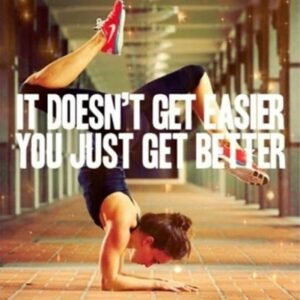
Remember to listen to your body and consult with a fitness professional before starting any new exercise routine. Enjoy your workout and have fun getting fit!
Short Workouts Get Results!

Short workouts are a great way to get results because they are efficient and easily fit into a busy schedule. By focusing on high-intensity exercises, short workouts can help increase your heart rate, burn calories, and build strength in a shorter amount of time.
The key to getting results from short workouts is to make sure they are targeted and intense. Incorporating a mix of strength training and cardio exercises can help you maximize your time and see improvements in your fitness level. Additionally, adding in intervals or circuits can help keep the intensity high and ensure you are pushing yourself during the workout.
Consistency is also key when it comes to short workouts. Aim to do them regularly, whether it’s daily or a few times a week, to see the best results. Remember to listen to your body and adjust the intensity and duration of your workouts as needed to avoid overtraining and injury.
Overall, short workouts can be an effective way to achieve your fitness goals, whether it’s improving your strength, endurance, or overall fitness level. So don’t underestimate the power of short, focused workouts – they can help you get results!
10 Things You Should Know About Stretching!
![]() 10 Things You Should Know About Stretching!
10 Things You Should Know About Stretching!
Before fitness training, one must give importance to doing warm-up or stretching exercises to prevent accidents or to enhance the output during the training. There are also precautionary measures and tips to serve as guidelines when doing fitness exercises. Here are some of them.
- To increase your flexibility and avoid injuries, stretch before and after a workout. Almost everyone knows that stretching before a workout prevents injuries during the exercises, but only few people know that stretching after a workout, when muscles are still warm, can increase flexibility.
- Hold your stretching position for more than 60 seconds to increase flexibility. While holding your position for 20 seconds is enough for warm-ups, holding each position for at least 60 seconds will develop the body’s flexibility.
- Do not go into a stretching position then immediately return to the relaxed position, and do it repeatedly. This is more appropriately termed as bouncing while in a position. When stretching, hold that position for several seconds, and then slowly relax. You may do this exercise repeatedly this way. Bouncing or forcing yourself into a position during stretching can strain or damage some joints or muscles.
- Work slowly in increments instead of immediately proceeding to doing the hardest exercise or position.
- Make sure that you have stretched or warmed up all muscle groups. For some people, even if they have strong bodies, they tend to neglect the neck when working out of stretching. Stretching the neck muscles can be as simple as placing the palm of one’s hand against the front of the head and pushing it. Then, do the same to the sides and the back of the head.
- Stretch regularly to continually increase your range of movements and your level of flexibility and strength.
- Workout considering only your capabilities and not of others. Do not force yourself to do exercises that you are not yet capable of just because there are people who can do it. Increase your limits slowly. Listen to your body. There are days when your body may be too tired that you may have to consider reducing your range of motion.
- Learn to rest. Rest in between sets and stations to make sure that the body has enough time to recover its energy. Also, it is advisable that you don’t work the same muscle groups consecutively for two days. The muscles grow during the period when you rest and not when you are working out.

- Do aerobic exercises to strengthen your heart. Aerobic exercises are those physical activities that much oxygen for fuel. This includes cardiovascular exercises such as skipping rope, running or swimming.
- Stretching is a crucial aspect of any fitness routine, but maximizing its benefits requires a deep understanding of proper techniques and methods. To transform your pre-written data on stretching into a masterpiece, consider delving into the science behind different types of stretches and their specific benefits. Detail the importance of dynamic stretching before a workout and static stretching afterward, emphasizing the role of each in preventing injury and improving flexibility. Explore the concept of proprioceptive neuromuscular facilitation (PNF) stretching and its effectiveness in increasing range of motion. Additionally, discuss the significance of breathwork and mindfulness during stretching exercises to enhance mind-body connection and amplify results. By incorporating these advanced concepts into your content, you can offer readers a comprehensive guide to optimizing their stretching routines and achieving their fitness goals more effectively.
Better Work Out
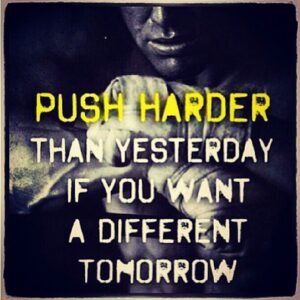
Fitness Q
Feeling overwhelmed by conflicting fitness advice and lacking motivation to prioritize your health?
Discover AboutWorkout.com, your go-to source for science-backed fitness information and lifestyle guidance.
Transform your approach to exercise and well-being with easy-to-follow tips and expert advice.
Empower yourself to make informed decisions that enhance your health and fitness journey for a lifetime.
Better Work Out
1.Stop and Go
If you play a sport that requires a full sprint, remember that a full sprint strains the muscles of the lower body. To combat this, do stop-and-go exercises. For example, run 30 meters at about 80 percent of your effort, slow to a jog for five to 10 meters, then run again for another 30 meters. Repeat this process five times.
2.On bended knees
Almost 3 out of four ACL injury occurs when players are landing or turning. If your knees are bent instead of straight, the risk of injury is greatly reduced according to a report in the JAAOS (Journal of the American Academy of Orthopedic Surgeons).
3.Cool down.
Heatstroke is not something that can be easily cured like headache. To avoid it, stay cool and hydrated. Be sure the combined temp and humidity is less than 160. This is according to Dr. Dave Janda of the IPSM.
4.Get the proper equipment.
Badly fitting gears or ill sized equipment can be a cause of training injuries. The extra money spent on proper equipment goes a long way.
5.Do it the right way.
Bad technique is just as bad as, well, bad equipment. Seek advice from pros and trainer, this advice are invaluable to your exercises or training.
6.Go West. (or whichever direction)
If you’re playing or training in multiple directions, your warm-up should also. Move sideways, backward, forward and all the motions you might be doing. This allows your body to be prepared.
7.Have yourself filmed.
The camera doesn’t lie. Show your video to a person well verse in your training, so he can give a critic of your fitness regimen.
8.Loosen the shoulders.
Even a slightly injured rotator cuff can shut down the function of a shoulder. You might want to include stretching to protect your rotator cuffs.
9.Take An early dip
Schedule your swimming sessions early. The fewer people in the pool means less of everything in the pool.
- Protect yourself.
Wearing custom-fitted mouth guards reduces the risk of injuries by as much as 82 percent, according to a study at UNC at Chapel Hill. Plunk out the cash for a custom-fitted mouth guard, and it’ll last for years, including your smile and teeth.
- Smooth out your tendon.
Inquire about ultrasound needle therapy. This procedure is minimally by using ultrasound to guide a needle. The needle smoothens the bone, breaks up calcifications, and fixes scar tissue. Thirteen out of twenty patients saw improvement, and the session takes only about 15 minutes of your time.
- Buy your running shoes after work.
Shop in the evening, the feet are swollen after a day of work. It approximates how your feet will be after three miles of running.
- Do off-road running.
If the surface is unstable, it trains the ankles to be stable.
- Know where you’re going.
Whether it’s biking, or skiing, be sure to have a dry run down any path first. A lot of injuries can be avoided when you’re familiar with the route taken.
- Train hard.
Anxiety reduces your peripheral vision by three degrees and slows the reaction time by almost 120 milliseconds, according to an article of the Journal of Sports Sciences. When the going gets difficult, the veteran athlete relies on skills they’ve trained for and practiced. It keeps them cooler under pressure, widening their vision so they can see react much faster.
Lifetime Fitness: On Your Way to a Healthier You
Here are some tips to help you on your journey to a healthier you:
1. Eat a balanced diet: Make sure to include a variety of fruits, vegetables, whole grains, and lean proteins in your meals.
2. Stay hydrated: Drink plenty of water throughout the day to keep your body functioning properly.
3. Exercise regularly: Aim for at least 30 minutes of physical activity most days of the week. Find activities you enjoy, making it easier to stick with.
4. Get enough sleep: Aim for 7-9 hours of quality sleep each night to allow your body to rest and recover.
5. Manage stress: Practice relaxation techniques such as deep breathing, meditation, or yoga to help reduce stress levels.
Lifetime Fitness: Balancing Health and Happiness

The Importance of Lifetime Fitness
Adopting a lifetime fitness routine holds paramount significance, as it transcends the pursuit of merely a healthy body weight, weaving its benefits intricately into the fabric of overall well-being. The cornerstone of lifetime fitness rests on maintaining a regular exercise regimen which, over time, imparts numerous long-term advantages. Consistency in physical activities is not only instrumental in managing body weight but also plays a crucial role in enhancing cardiovascular health, strengthening muscles and bones, and reducing the risk of chronic diseases such as diabetes, hypertension, and certain cancers.
Beyond the evident physical benefits, the holistic scope of lifetime fitness touches upon mental health, fostering cognitive function, and emotional balance. Regular exercise acts as a natural antidote to stress, anxiety, and depression by prompting the release of endorphins, which are known as the body’s natural mood elevators. This routine engenders a sense of accomplishment and self-confidence, further contributing to overall happiness and quality of life. The consistent practice of lifetime fitness also aids in better sleep patterns, increased energy levels, and sharper focus, collectively nurturing a robust mental state.
The essence of lifetime fitness is deeply rooted in commitment and perseverance. Achieving sustainable health and happiness entails an unwavering dedication to a balanced and active lifestyle. Establishing realistic goals and setting a steady pace are pivotal in ensuring that the fitness journey is both enjoyable and attainable. Adjusting and evolving one’s fitness routine with age and capability not only makes the process less daunting, but also encourages a lifelong adherence to physical activity. Lifetime fitness is, therefore, a dynamic blend of physical exertion, mental resilience, and continuous adaptation, ultimately fostering a harmonious balance between health and happiness.
Balancing Exercise and Diet
A well-rounded approach to physical fitness involves striking a harmonious balance between diet and exercise. Nutrition serves as the cornerstone of any fitness regimen, fueling the body for physical activity and aiding in post-exercise recovery. By understanding the interplay between these two elements, one can optimize their health and wellness journey.
The significance of a balanced diet cannot be overstated. Consuming a variety of nutrients is essential to support the body’s energy requirements. Proteins are vital for muscle repair and growth, while carbohydrates provide the primary source of energy for prolonged physical activities. Healthy fats contribute to essential bodily functions, and vitamins and minerals play critical roles in overall health maintenance. Hydration is equally crucial, as water is necessary for virtually every bodily function, especially during and after exercise.
Exercise routines should be tailored to complement one’s dietary habits. For instance, high-intensity interval training (HIIT) and strength training require substantial protein intake for muscle recovery. Conversely, endurance activities like cycling and long-distance running benefit from a higher carbohydrate intake to sustain energy levels. The timing of meals is also pivotal; pre-workout snacks can optimize performance, while post-workout nutrition aids in recovery and muscle synthesis.
Practical tips for achieving this balance include planning balanced meal plans and incorporating diverse forms of exercise. A weekly meal plan that includes lean proteins, whole grains, vegetables, and fruits can ensure a nutrient-dense diet. On the exercise front, integrating activities such as team sports can enhance cardiovascular fitness and social interaction, cycling provides an excellent low-impact workout, and walking remains one of the simplest yet effective methods to maintain daily activity levels.
By focusing on the synergy between diet and exercise, one can not only achieve their fitness goals but also promote a sustainable and enjoyable lifestyle. A well-thought-out plan that incorporates these elements will lead to long-term health and happiness.
Making Exercise Enjoyable
Incorporating exercise into a daily routine can often feel like a daunting task. However, the key to making this commitment sustainable lies in transforming exercise from a chore into an enjoyable activity. Finding physical activities that spark joy is essential. Instead of adhering to a rigid gym regimen, consider exploring a variety of options such as team sports, cycling, or simple yet effective activities like walking. Each of these alternatives offers unique benefits, making the fitness journey more enjoyable and less monotonous.
Engaging in team sports, for instance, not only improves physical health but also fosters a sense of community and camaraderie. This shared experience can significantly enhance the psychological benefits of exercise, boosting motivation and consistency. Similarly, cycling serves as an excellent cardiovascular workout that allows individuals to explore their surroundings, bringing an element of adventure and excitement to the routine.
Walking, often underestimated, is another effective and accessible form of exercise. Whether it’s a leisurely stroll in the park or a brisk walk to clear the mind, walking offers numerous health benefits. It’s also a flexible option that can easily fit into one’s daily schedule, making it a sustainable choice for long-term fitness.
The psychological benefits of finding joy in physical activities cannot be overstated. Enjoyable exercise releases endorphins, which alleviate stress and elevate mood. This positive reinforcement is crucial for maintaining motivation over time. When individuals participate in activities they love, they are more likely to develop a consistent exercise habit, leading to long-term health benefits.
Ultimately, the most effective fitness routine is one that aligns with personal interests and lifestyle. By making exercise an enjoyable part of everyday life, individuals can achieve a balanced approach to fitness, ensuring that health and happiness go hand in hand.
Sustaining Long-Term Healthy Lifestyle Changes
Embarking on a journey towards a healthy lifestyle requires both a proactive mindset and consistent behavioral adjustments. Transitioning from short-term fitness goals to a lifelong commitment necessitates realistic goal setting, practical strategies, and a supportive environment.
Firstly, setting realistic and achievable goals is paramount. Break down your aspirations into manageable targets. For instance, instead of aiming to drop an unrealistic amount of weight in a short span, focus on losing a smaller, feasible amount each month. Similarly, if your goal is to run a marathon, start with shorter distances and gradually increase your mileage. Achieving these incremental goals not only fosters a sense of accomplishment but also builds confidence and momentum.
However, the path to a healthier lifestyle is often riddled with obstacles. Common challenges such as time constraints, lack of motivation, and physical limitations can impede progress. Overcoming these hurdles involves strategical planning and persistence. Time management techniques, such as prioritizing workouts and integrating physical activity into daily routines, can effectively address the issue of limited time. Combatting a lack of motivation might involve tracking progress visually through fitness apps or joining a community of like-minded individuals who can offer encouragement and accountability.
Creating a supportive environment is another crucial element in sustaining long-term changes. Surround yourself with people who share your health goals or who positively reinforce your efforts. Whether it’s friends, family, or fitness groups, a support system can provide the necessary encouragement, share in your achievements, and lend a helping hand during challenging times.
Real-life success stories often serve as powerful motivators. Consider individuals like Sarah, who transformed her life by committing to a daily yoga practice and mindful eating, or John, who turned his fitness routine into a family activity, thereby fostering a healthier lifestyle for his entire household. These stories highlight that with realistic goals, resilience, and support, sustaining a long-term healthy lifestyle is both possible and rewarding.
Ways to Lose Belly Fat
Ways to Lose Belly Fat
Have you heard about the stress-fat connection?
- Quick Tips
Do you know how and why anxiety and tension triggers us to pile on the pounds? If you’re gathering ways to lose belly fat, learning stress management is a vital technique.
Stress stimulates the fight or flight response, which is the brain’s red flag to take action in emergency situations. When your brain senses a threat, it signals your adrenal glands to push out the stress hormone, cortisol. The stress hormone prompts fat cells to make quick energy available.
Extra energy serves as a power surge your muscles can use to either stay and fight, or flee from danger. This mechanism worked beautifully in the eras when man faced physical danger from wild animals, etc. However, it can’t discern what causes modern day stress, such as financial or marital problems. It keeps on cranking out cortisol, which we don’t use, and the body stores it as fat.
Studies have shown the mechanism influences where the excess flab is stored. Particularly in women, it is stored as deep abdominal flab – the dangerous kind of fat – which increases risks of heart disease and stroke.
Your first thought is likely to start a serious calorie-restricting diet. Let’s correct this old way of thinking. Again, according to clinical studies, incorrect dieting increases stress and cortisol levels.
So, what are right ways to lose belly fat?
Avoiding simple sugar and Trans fats is a good place to start breaking the stress-fat cycle. Both these culprits tend to pile fat on your belly. Read food labels because manufacturers can be sneaky.
If you are “starving” your sweet tooth, make a fruit smoothie. Sweeten it with a little honey or molasses if you must add sugar.
Make your diet as natural and unprocessed as possible. Don’t add extra stress by eating a lot of stuff you don’t like. There are plenty of healthy foods to choose from.
Also, don’t starve yourself. “Dieting” does not work, and it can make you very sick. Severe calorie restriction destroys protein and lean muscle.
Don’t force yourself to eliminate something you really like. Once you start eating a clean diet, it will gradually eliminate itself.
Get your necessary fats from monounsaturated fatty acids such as, seeds, nuts, olive oil, soybeans and avocados.
Eat your fill of fresh fruits and veggies. Get at least three of each every day. Buy organic if possible. Eat your dark, leafy greens, such as mustard, spinach and collards.
Try to consume fewer animal products – yes this includes meat. Start with a “meatless meal” one night a week. Have fatty fish, such as salmon or tuna twice a week.
If you couldn’t care less about meat, consider a vegetarian way of life.
Drink more water than anything else. Water helps flush out fat.
Sleep is a component you may not have considered. If you do not get quality sleep on a regular basis, your cortisol levels rise and fat accumulates on your belly.
In general, sleep-deprived people test higher in ghrelin, which is the hunger-stimulating hormone. They also test lower in leptins, the fullness hormone.
As for exercise, do some and then do a little more. Clinical research suggests that aerobic exercises are one of the best ways to lose belly fat. You will undoubtedly exercise more if you enjoy it. For example, do you love to dance? Have you always wanted to take a kickboxing class? Does your local YMCA offer water aerobics?
Finally, don’t try to turn your lifestyle upside-down overnight. We’ve shown you ways to lose belly fat. Each time you implement one change, you’re investing in a happier, healthier life.
Moderate Exercises to Fitness!
Moderate Exercises to Fitness!
Have you ever felt tired and stressed out from work and by the time you get home you see your three children running towards you asking you to play basketball with them? You refused and promised them that you would after you take your rest.
Instead of disappointing your children, why not say, “yes” after all? You will be surprised by the amount of energy you will have after that 30-minute activity.
 Did you know that by exercising at a moderate pace for only 30 minutes, you would feel a lot better, mentally? It has been proven that this improves the appetite and sharpens your style in problem solving. Not only that. You will also feel that it is easier to sleep at night if you do moderate exercises even for only 30 minutes every day.
Did you know that by exercising at a moderate pace for only 30 minutes, you would feel a lot better, mentally? It has been proven that this improves the appetite and sharpens your style in problem solving. Not only that. You will also feel that it is easier to sleep at night if you do moderate exercises even for only 30 minutes every day.
What are the benefits of regular exercise? It promotes self-discipline and has a positive impact how you perceive life. Exercise helps in lifting your spirits and getting you out of any depression. For first timers, it can be done for 15 minutes for 2 to 3 days a week. You can increase the time you spend once your body gets tuned up for it.
DON’T you ever force your body! If you get hurt, then stop. You can take a break from exercising for a few days and then you can start again but you need to start from day 1.
Here are some moderate exercises you can do and enjoy:
- Do the Walking. Make use of your surroundings. You can walk your dog, with your partner or child. Encourage your family to do the walking exercise daily and you will find yourself burning calories while enjoying the surroundings and getting enough sunlight that is also good for your body.
- Discover the wonders of Yoga. Yoga is one effective exercise that energizes not only your body but also your soul. You may want to learn even the basic yoga positions that are not too complicated but proven effective. A five-minute yoga exercise can perk you up and recharge your body with the energy you lost for the whole day. You relax and at the same time you stretch!
- Engage yourself into sports. Play basketball, football, baseball, tennis or badminton. Many doctors have recommended sports as an effective way to stay fit and healthy. Sports can also be done in moderation. Do not take it seriously. Shooting basketball with a friend is one moderate exercise that is also considered a sport.
- Join exercise programs at work. If you still do not have exercises programs at work, then why not start it? You can talk to your boss about it and start with your colleagues. You do not only lose calories but it is also one good way to bond with them. This can be done 30 minutes, 3 times a week.
- Exercise while doing household chores. Gardening, raking leaves, lawn mowing, doing the laundry, vacuuming and car washing are effective moderate exercises at home. Make use of these chores to sweat and burn calories. Instead of using machines and gadgets to perform these chores, why not do it with your hands and lose some fats?
Making exercises as part of your daily routines will surprise you of how much calories you will lose. Doing these moderate exercises of the same amount every day can burn 150 calories up to 1,000 calories a day!
Things to Consider When Buying Home Fitness Equipment.

Fitness Today
Things to Consider When Buying Home Fitness Equipment.
A hundred lots of home fitness equipment nowadays are sold in the market. Do not make the mistake of buying something and regretting why you bought it after a day or two. Home fitness types of equipment vary, and you should always have one good reason to buy it. Don’t believe everything commercials tell you about the equipment. Some equipment may seem easy to use on television, but in fact, will not work for you. Try to ask yourself first of these questions before you grab your wallet and buy that equipment.
Do you need it? The equipment should suit your interests and needs. The activities that you will do with that equipment should be challenging and something to enjoy on. Buying equipment is never a guarantee that you will use it, especially if it is something new that makes it harder to use. Make sure that you already know the equipment and that it is something that you already tried in a fitness club. Start from buying small equipments that are aligned to your interests.
Can you afford it? Don’t be fooled with the thought that you will be forced to use something because you spent too much money for it. Expensive equipments are never an assurance that you will use them or that they are effective for you. Always consider how much are you willing to pay for certain equipment. Also ask yourself if it is worth it. Always check on the quality before you buy equipment. The price may be too low but consider that the quality can also be low. Or it may be expensive, but then the quality is not that good. You can try choosing on cheaper alternatives but not sacrificing the quality of the equipment.
You may also want to check out for some used equipments. Most of the time, this is where you find a better deal. You can even find equipments that do not seem to have been used at a very low rate. Or you can find the equipment 3 months old, but the price is almost half the original.
Do you have enough space for it? This is often what buyers forget to consider. Try to consider first where to place a treadmill before buying it. Before you buy something, make sure you know where you will place it. Your place may not accommodate the equipment. Plan ahead and make sure that the equipment can be placed in your home without causing any hassle.
Is it safe for you? If you have existing conditions, be sure to check with your doctor to make sure that the equipment will be safe for you. Some equipment may be painful to use and might cause harm to your body. So make sure to try it first be fore you buy it.
It also suggested that you first consider if a gym near you already has that equipment. You can save money by just registering to that gym and use that equipment compared the price you will spend if you will buy that product.
Buying fitness equipments should be bought with consideration. Do not buy by impulse. Always ask the opinion of a professional gym instructor before you buy something.
